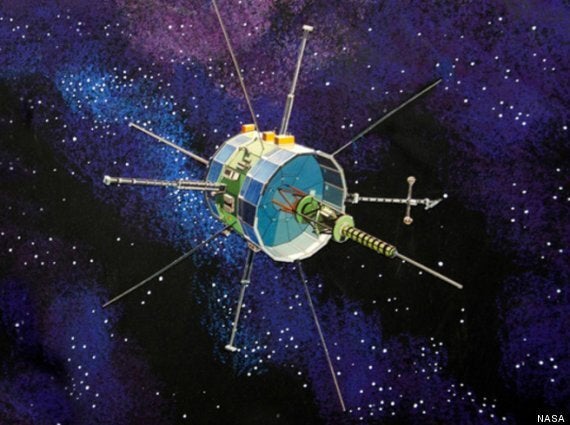Nasa has agreed to let a group of enthusiasts attempt to communicate with a 36-year-old spacecraft as it flies past Earth in August.
The International Sun-Earth Explorer-3 (ISEE3) spacecraft was launched in 1978 in order to study the solar wind. It finished its primary mission in 1981 and was then redirected to study two comets, which it did successfully.
After that, though, Nasa was finished and the spacecraft was left to drift around the Sun and fill its time in whatever way it saw fit. The mission was eventually shut down in 1997.
But in 2008 the international Deep Space Network managed to make contact with the craft and found it was still in working order.
Now, it's back. The spacecraft is set to make its closest approach to Earth in years in August, and a group of enthusiasts has been campaigning for Nasa to let it communicate with the craft - and potentially send it on a new mission.

The company Skycorp says it wants to place the craft back in Earth orbit, and once there return it to operations and send it away again on a new mission if at all posible.
They've already raised $125,000 to fund the effort, via the crowd-funding site RocketHub. It is now searching for another $25,000 so it can try to communicate with the craft and figure out how to make it work.
Which isn't easy, according to Keith Cowling, a former Nasa engineer leading the effort.
"It doesn't remember anything," he told Motherboard. "You just tell to do a task and that's it. Your toaster is smarter than this thing."
Nasa itself has no plans for the craft, and has now agreed to let Skycorp Inc attempt to contact and possibly control the craft. The two have signed a Non-Reimbursable Space Act Agreement which details the safety and legal issues involved before the attempt is made.
"The intrepid ISEE-3 spacecraft was sent away from its primary mission to study the physics of the solar wind extending its mission of discovery to study two comets." said John Grunsfeld, astronaut and associate administrator for the Science Mission Directorate at Nasa. "We have a chance to engage a new generation of citizen scientists through this creative effort to recapture the ISEE-3 spacecraft as it zips by the Earth this summer."
There are still risks - the craft is very old and it is not known if its systems are fully working. But the team behind the plan says the attempt itself will be a huge opportunity to educate scientists and students about space and space exploration.